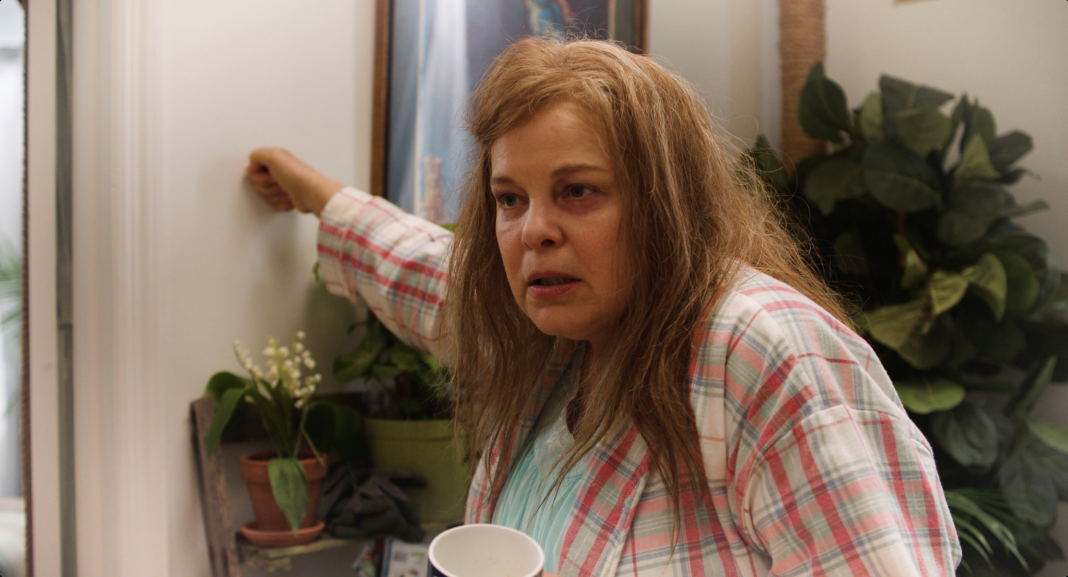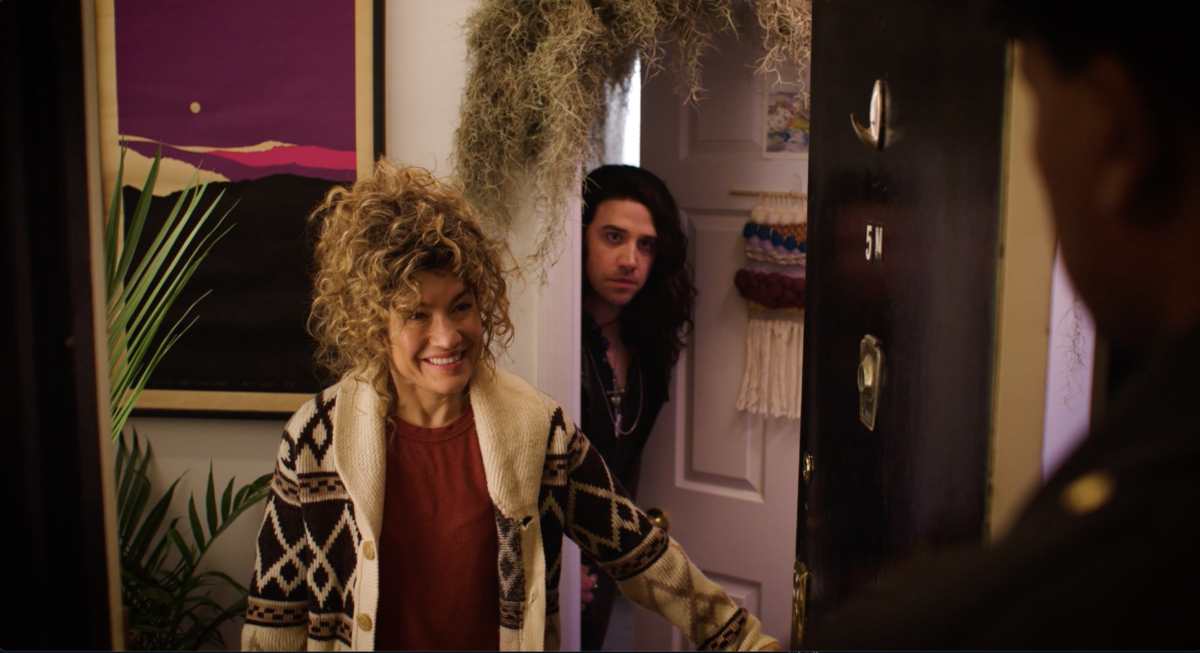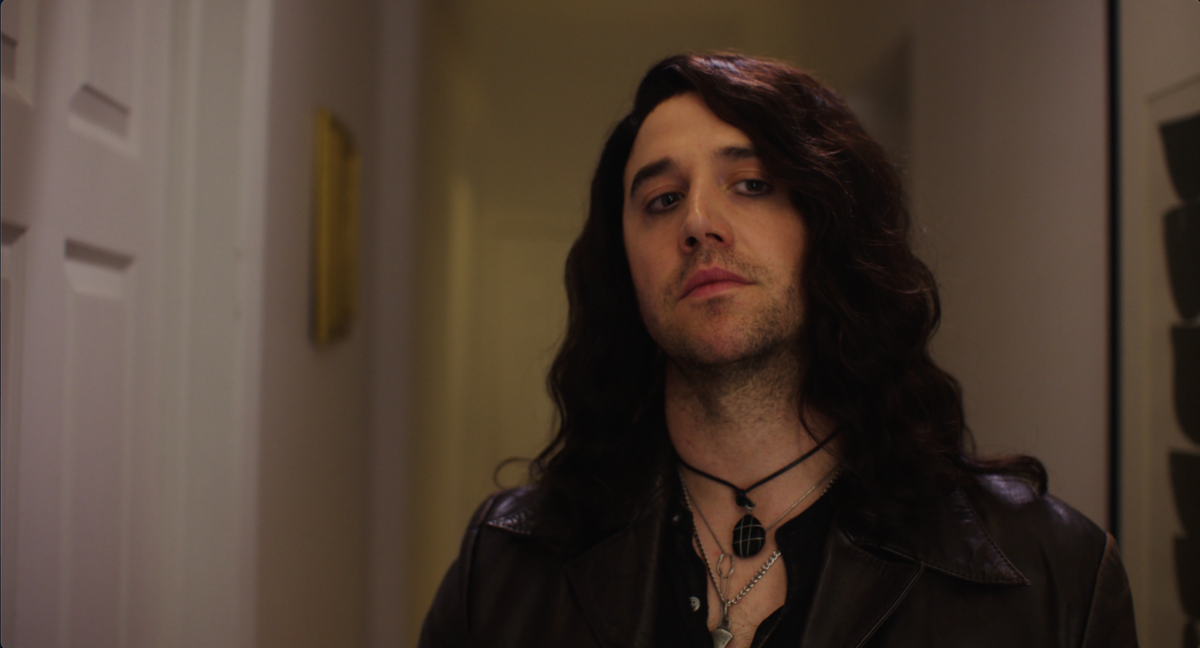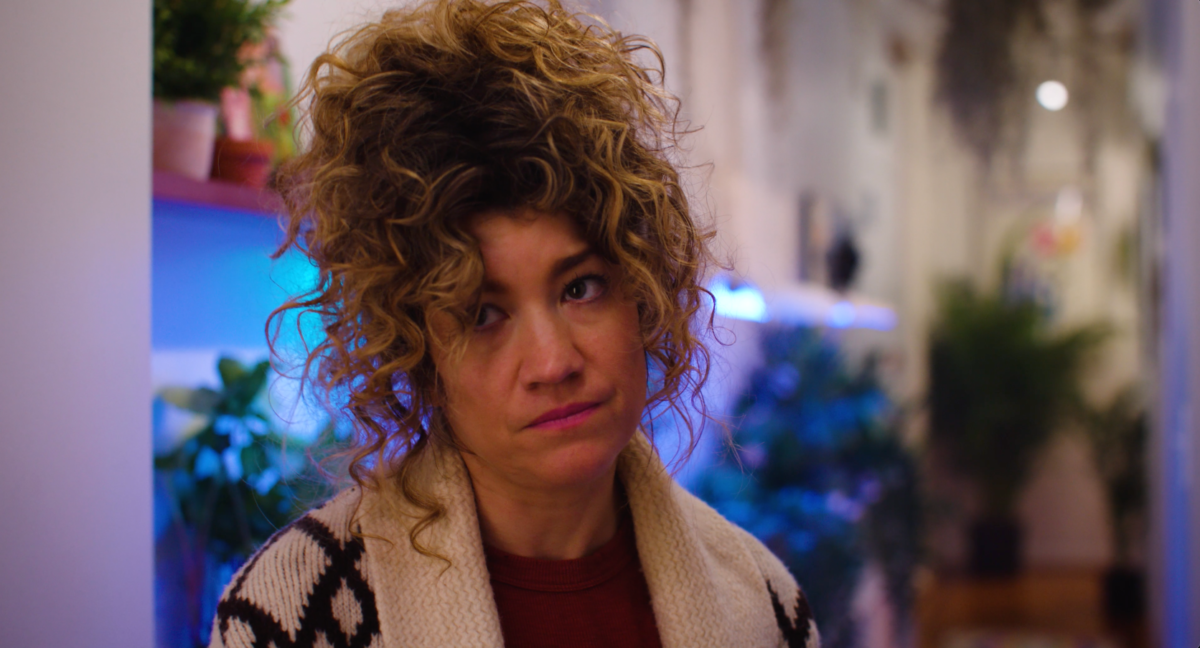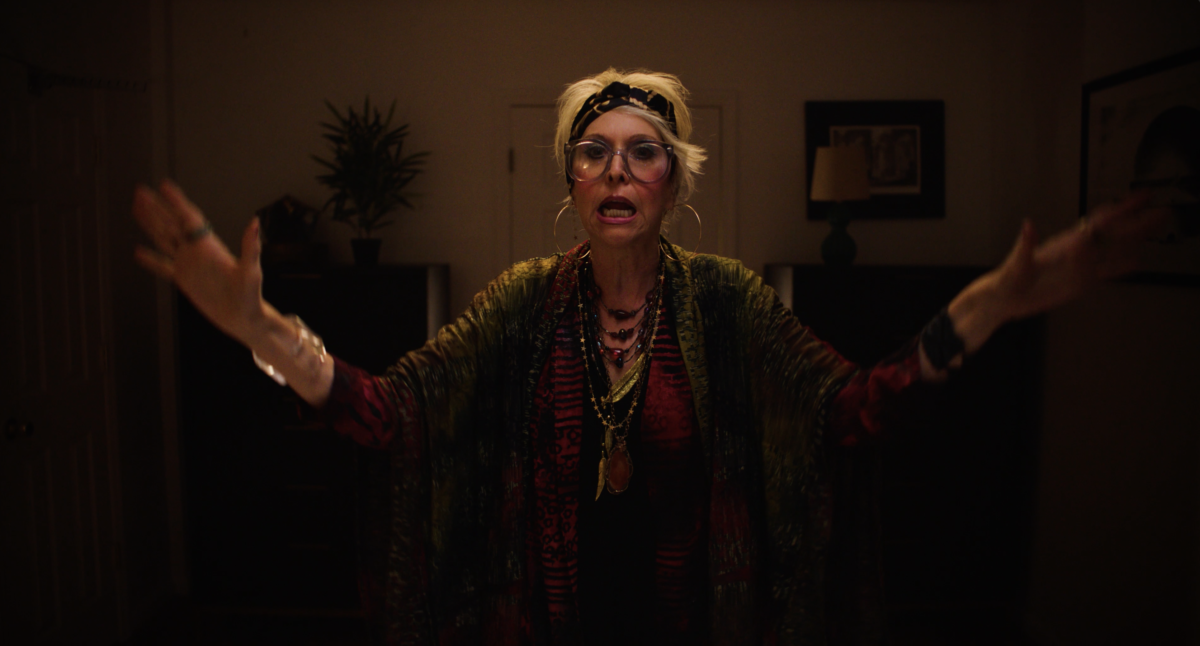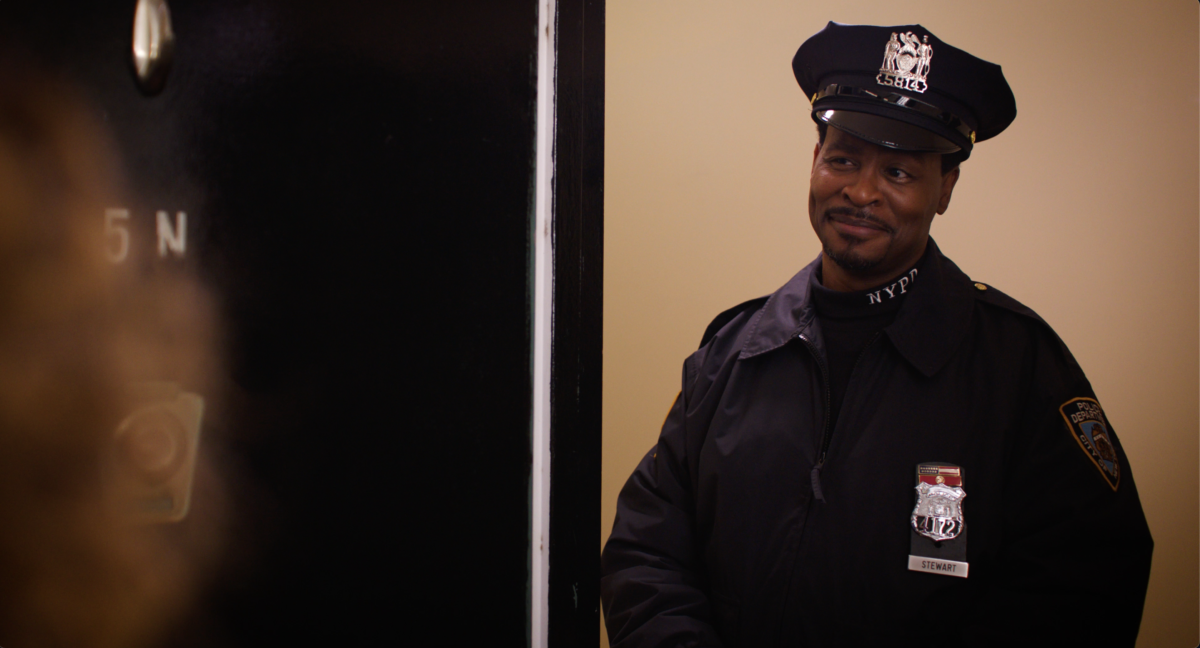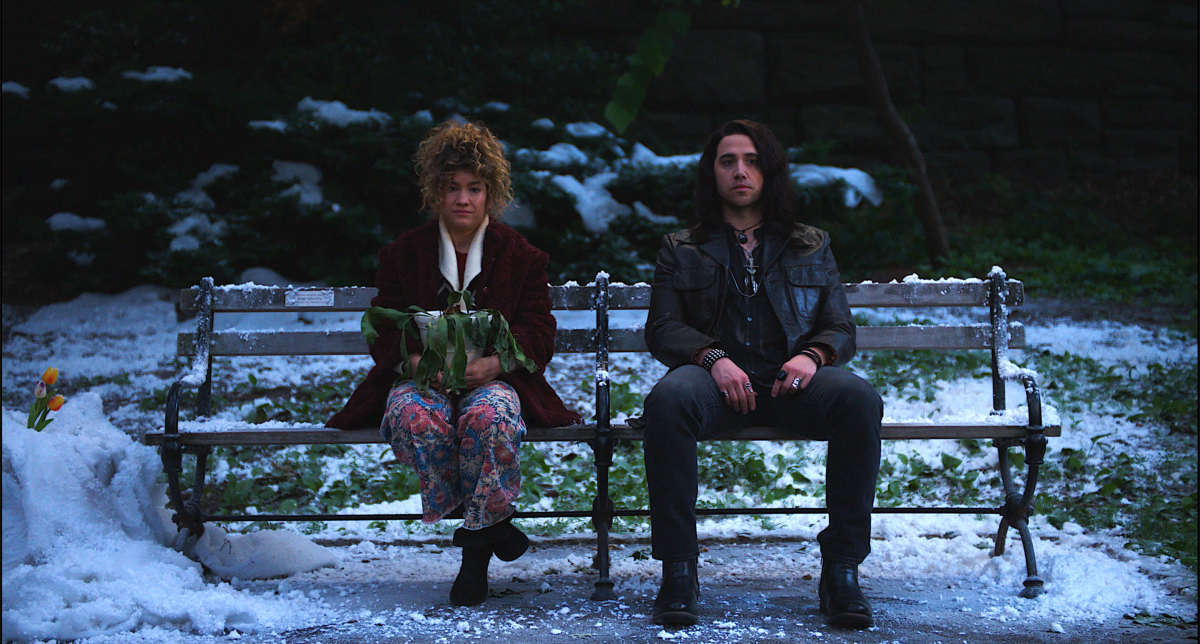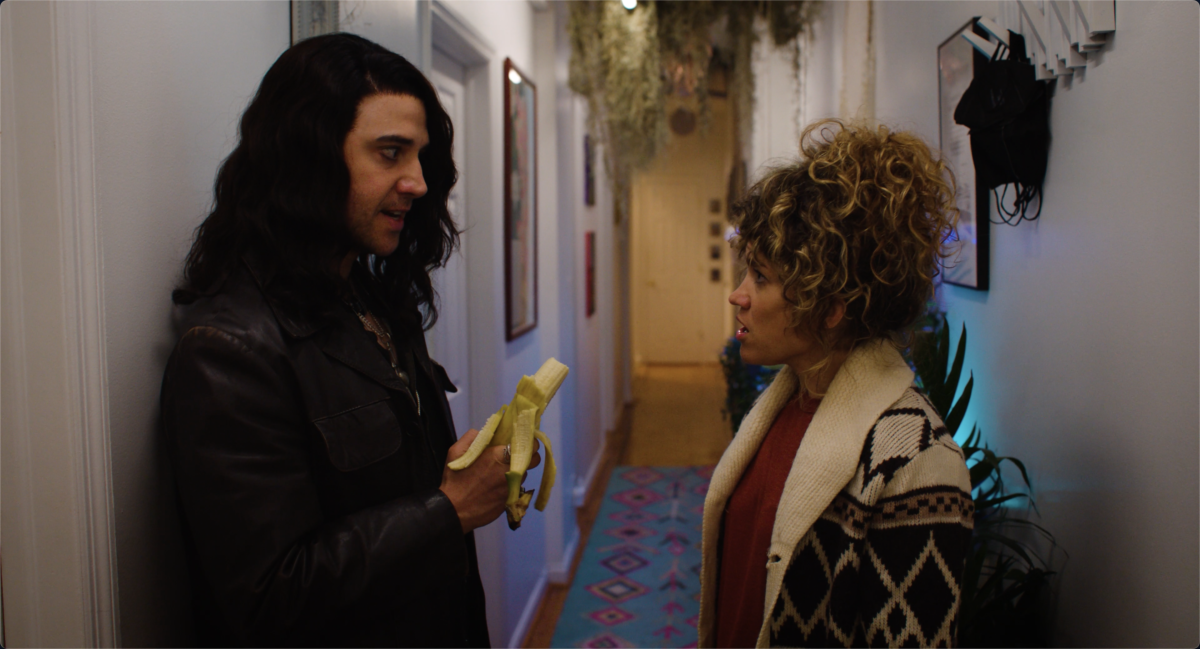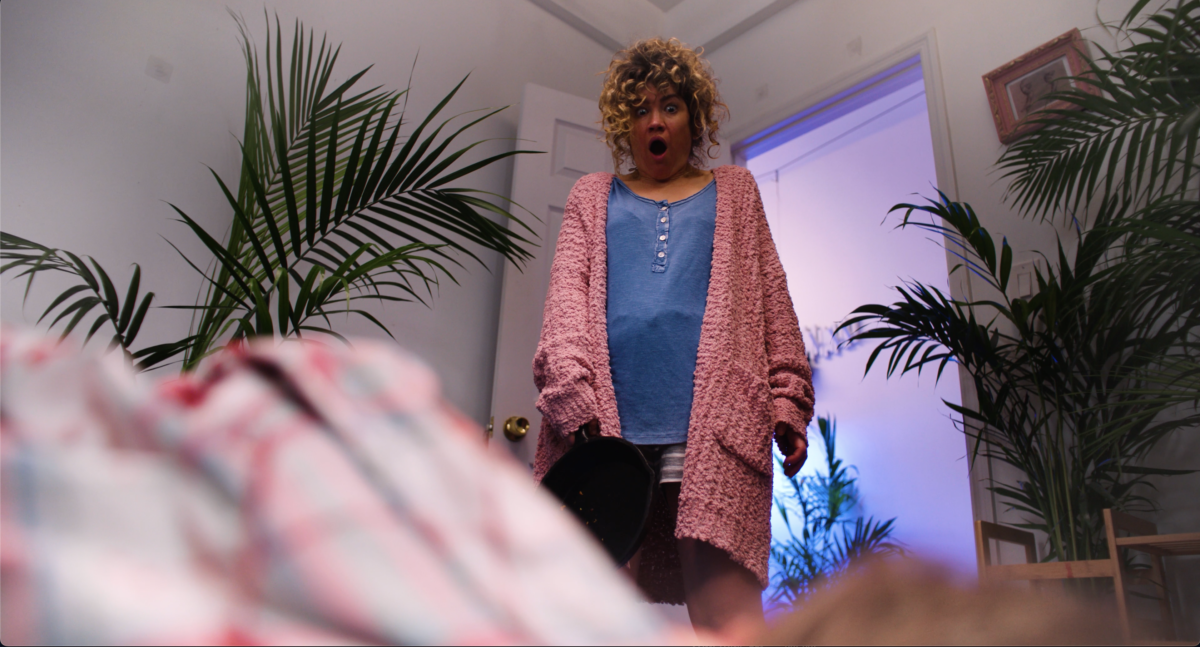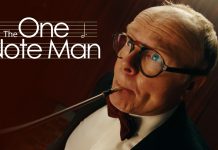A brother and sister have to deal with immediate (and perhaps unwarrented) tragedy in Dave Solomon’s dark comic horror short BRENDA AND BILLY (AND THE POTHOS PLANT).
Film And TV Now spoke with the film-maker about the short.
This has the tone of films like PULP FICTION a la THE BONNIE SITUATION. What was the start-off point for the short?
Well, as a huge Tarantino fan, I really appreciate that.
I will never forget sitting in a theatre on the opening night of Pulp Fiction and seeing Marvin get shot in the face. That unexpected moment and the audience reaction after…people were hysterical and it was historical; cinema history.
I hadn’t even realized that there are some similarities there with the whole dead-body/clean-up situation until you mentioned it. The launching point for our film was actually Santino Fontana, who plays Billy, suggesting that I write something for him and Sarah Stiles to do together. We had all worked together before and it was the Omicron phase of the pandemic, so work was scarce and people were stuck indoors again.
I started thinking of something simple that we could make; a short film basically. I went for a run and the first thing that popped into my head was the two of them sitting on a bench and Sarah holding a dying plant. Santino had given me a list of characters he wanted to play and one of them was a magician.
I honestly can’t tell you where the rest came from, but my mind just went down some sort of pandemic rabbit hole and I think a lot of the tensions and frustrations we had all been experiencing came out through this heightened, bloody, absurdist comedy. It felt like a bit of a release that you could only do through film.
There is a fine line drawn between horror and comedy throughout this. How challenging is it to maintain that blend to rewarding results?
Honestly, it was just a tone that I saw and heard in my head once I discovered these characters and knew that Sarah and Santino would be playing them.
They have such incredible chemistry and I think the tone also came across pretty clearly in the script because everyone from cast to crew really understood what it was and we all seemed to be seeing the same film as we started bringing it to life. And the horror elements are really all storytelling beats.
The cutaways and flashbacks tell you so much without having to explain while also providing an unexpected jolt (and hopefully a laugh) because they are so extreme. And that’s also where the blend happens.
If you take away the extreme situation here (the “horror aspect”) it really is just a daughter contacting her estranged brother to help her get through a familial spat with their mother; something that is probably very familiar to most of us. But you bring that into absurdist territory – and allow our characters to let that tension out in a way we might imagine but never really act on in real-life – and it becomes comedic.
A comedic horror film with a layer of truth and honesty beneath it; because there really is also a beautiful and layered relationship being altered by this circumstance and the film is ultimately about two siblings reconnecting.
Tell us about your cast.
They are brilliant. Each one of them. I really got lucky with this one. Of course, I wrote it for Sarah and Santino, so it was one of those instances where we did a table read and it sounded almost exactly like what I had in my head when I was writing it.
They obviously brought more to it than was even on the page because they are so brilliant. And then Catherine Curtin as the mother also brings such pathos and honesty to her one scene with Brenda; you get that whole relationship and the whole family dynamic from what she does, but she is also enough of a monster that you can still laugh at the chaos inflicted on her.
Beethovan Oden was an actor Santino had worked with before and was everything I was looking for with Officer Carl. He shows up halfway through and is truly the unsung hero of the film. I wanted him to be loveable, have a friendly familiarity with Brenda, but also be ‘no bullshit.’ He’s a good guy, but he’s not messing around…so the stakes of the second half of the film all come from him.
Then who better to make a one-line, chanting, smudge-stick waving cameo than Julie Halston. Comedic genius. If I could, I would have five minutes of her just chanting and waving shit around. We were all trying so hard not to laugh behind the monitor.
Tell us about your production team.
Also all brilliant. We pulled this off in three days and only fell behind schedule once.
So, that sort of says it all. Danny McCrea was a killer 1st AD and we reworked that schedule over-and-over so many times to make sure we could pull it all off and then he kept everything on set in line but also joyful. As did our producing team of Harris Doran, Karen Johnston and associate producer David Meyer.
Harris is also a brilliant writer/director, so as a producer he knows how to run a set and manage everything while also supporting the artistry in every way possible. And then there’s David Stiles, our DP, who was probably the MVP of the shoot.
There is no way we could have done what we did in such tight spaces and on the schedule we were on without him literally strapping that camera rig to his back and running those set-ups and shots like some sort of cinematic athlete.
It was quite impressive. And Nate Garner, our production designer…with all those plants! I do not even understand where they came from, but they just kept coming! And he turned a park bench in June into the most perfect, slightly surreal winter wonderland…with tulips!
(Small easter egg: the tulips growing out of the snow are actually the same arrangement that is on the kitchen table in the scene with the mother.)
Then Tommy Kurzman’s brilliant wigs literally transformed Santino and Cathy as Lisa Zinni’s costumes transformed the entire cast into these characters. And, despite the intensity of the schedule and extreme elements of the piece, it honestly was one of the most fun and enjoyable shoots I’ve ever had. We all had a great time making this!
I also think there is something about having vomit rigs and blood spraying out of necks that truly unites a company. And Rich Krusell and Paul J. Mason from Gotham FX were also a constant delight and true joy to work with. And the film truly would not work if their effects didn’t work. And they killed! Literally.
Where did you shoot and for how long?
We shot for three days and a few hours; doing the final bench scene “dawn-for-dusk” on a very early morning the following day.
We filmed the entire movie in a New York City apartment on the upper west side and the bench scene nearby in Riverside Park.
Tell us more about the make-up effects and your collaboration with the team.
Rich Krusell and Paul J. Mason from Gotham FX did all the make-up effects and were just a dream to work with.
I have always wanted to do something with practical effects and they made it all seem so easy and fun. There was a lot of pre-planning and some on-the-day challenges of course, but they understood exactly what I was hoping to do and did it better than I could have imagined.
Even if something didn’t work on set, we could quickly pivot to another option. And Cathy Curtin, who plays the mother and endures most of the prosthetics, vomit and blood was such a trooper with all of it.
Rich and Paul’s work is incredible, looks incredible and doing all that work live and onset honestly brought so much excitement and joy to the process…and makes it all funnier. I think there’s something about knowing it’s actually happening in-camera makes it more fun for the audience, as well.
Did you rehearse much with the actors whilst shooting?
We actually did some rehearsals in advance. Sarah, Santino and I did a table read where we read and worked through the script, making some cuts, tweaks and adjustments.
Then we did one “walk-through” rehearsal with Sarah, Santino and David Stiles, our DP, to really plot the action and camera moves in advance, so everything would go a bit smoother during the shoot.
This also gave Sarah and Santino a chance to get it in their bodies and allowed us to set some action and ideas in advance; which made things easier when filming out of sequence.
You work in both theatre and film. How does each medium affect and influence the other when you create?
It’s funny, this film did feel a bit more theatrical because of the heightened comedic tone, the considerable amount of dialogue and the (mostly) single location.
A lot of my other work feels more inherently cinematic and I don’t usually feel like one influences the other; I feel like they are very different art forms.
And even though you could argue that the dialogue feels a bit theatrical here, and there is one take in the film that lasts about a minute and a half with Sarah and Santino volleying lines back-and-forth, my primary influences in approaching this piece were Woody Allen and Quentin Tarantino…with a touch of John Waters. And I also revisited Robert Zemekis’ Death Becomes Her, Ready or Not and The Exorcist.
Who and what are your key cinematic influences?
Again, for this film I would say Tarantino, Woody Allen, also Nicole Holofcener. But, in general, I am a huge David Lynch fan.
Also Kubrick, Spielberg, James Wan, Mike Flanagan, Alex Garland, David Lowery, Charlie Kaufman, Hitchcock, Scorsese, Martin McDonagh, Noah Baumbach, Ang Lee, PT Anderson, Terrence Malick, this could go on and on…
What issues and themes are you keen to explore in future work?
I have a feature screenplay in development that is a 70s Halloween horror film that utilizes real customs and rituals in a story that is ultimately about the masks we wear in real life and the bullied becoming the bully. It was inspired by a great Wes Craven quote, “the monster can’t get you if you are the monster.”
I’m also working on something about inner beauty and learning to love your own reflection; sort of a kid and creature film in the world of Iron Giant, E.T. and A Monster Calls.
How has the festival circuit helped your film? As of now, we have only just premiered at Tribeca but that alone has given us so much exposure and more press than I’ve ever received for a short film. It’s been truly incredible.
Finally, what are you most proud of about this short?
The tone and style. Just talking through all these elements and about our cast and production teams reminds me that it takes a village to make something like this and I am proud that the tone and style is consistent across all aspects of the film.
Of everything I have ever written, it is probably closest to what I pictured in my head and I’m grateful to every single person involved for trusting me and for bringing it to life.
Please follow and like us:


